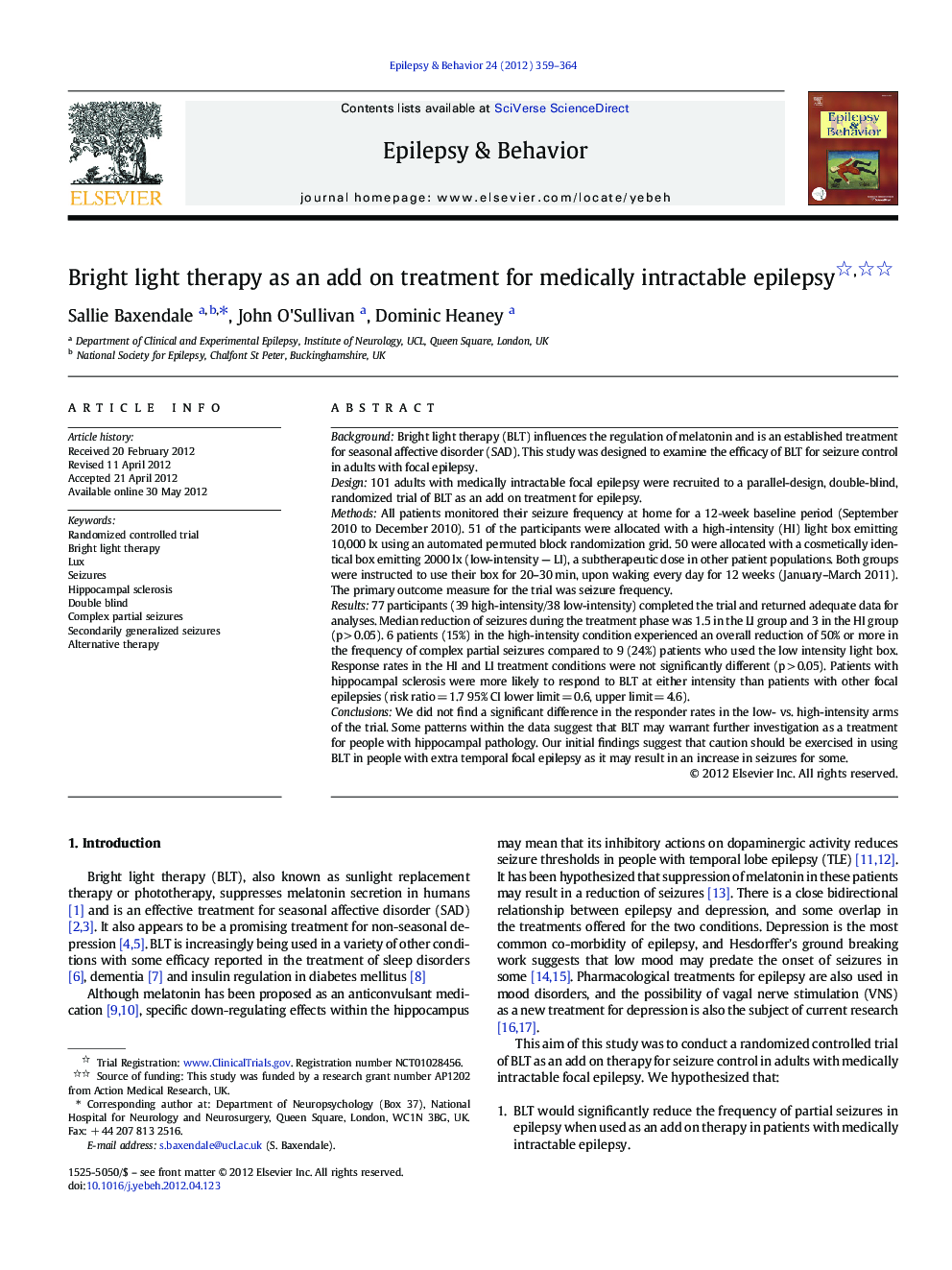| کد مقاله | کد نشریه | سال انتشار | مقاله انگلیسی | نسخه تمام متن |
|---|---|---|---|---|
| 3049834 | 1185924 | 2012 | 6 صفحه PDF | دانلود رایگان |

BackgroundBright light therapy (BLT) influences the regulation of melatonin and is an established treatment for seasonal affective disorder (SAD). This study was designed to examine the efficacy of BLT for seizure control in adults with focal epilepsy.Design101 adults with medically intractable focal epilepsy were recruited to a parallel-design, double-blind, randomized trial of BLT as an add on treatment for epilepsy.MethodsAll patients monitored their seizure frequency at home for a 12‐week baseline period (September 2010 to December 2010). 51 of the participants were allocated with a high-intensity (HI) light box emitting 10,000 lx using an automated permuted block randomization grid. 50 were allocated with a cosmetically identical box emitting 2000 lx (low-intensity — LI), a subtherapeutic dose in other patient populations. Both groups were instructed to use their box for 20–30 min, upon waking every day for 12 weeks (January–March 2011). The primary outcome measure for the trial was seizure frequency.Results77 participants (39 high-intensity/38 low-intensity) completed the trial and returned adequate data for analyses. Median reduction of seizures during the treatment phase was 1.5 in the LI group and 3 in the HI group (p > 0.05). 6 patients (15%) in the high-intensity condition experienced an overall reduction of 50% or more in the frequency of complex partial seizures compared to 9 (24%) patients who used the low intensity light box. Response rates in the HI and LI treatment conditions were not significantly different (p > 0.05). Patients with hippocampal sclerosis were more likely to respond to BLT at either intensity than patients with other focal epilepsies (risk ratio = 1.7 95% CI lower limit = 0.6, upper limit = 4.6).ConclusionsWe did not find a significant difference in the responder rates in the low- vs. high-intensity arms of the trial. Some patterns within the data suggest that BLT may warrant further investigation as a treatment for people with hippocampal pathology. Our initial findings suggest that caution should be exercised in using BLT in people with extra temporal focal epilepsy as it may result in an increase in seizures for some.
► We compared 2 intensities of bright light therapy (BLT) for epilepsy in 77 patients.
► Responder rates did not differ between 10,000‐lux and 2000‐lux BLT.
► Patients with hippocampal sclerosis are most likely to respond to BLT.
► Caution should be exercised in using BLT in people with extra temporal foci.
► Further investigation of BLT in patients with temporal lobe epilepsy is warranted.
Journal: Epilepsy & Behavior - Volume 24, Issue 3, July 2012, Pages 359–364